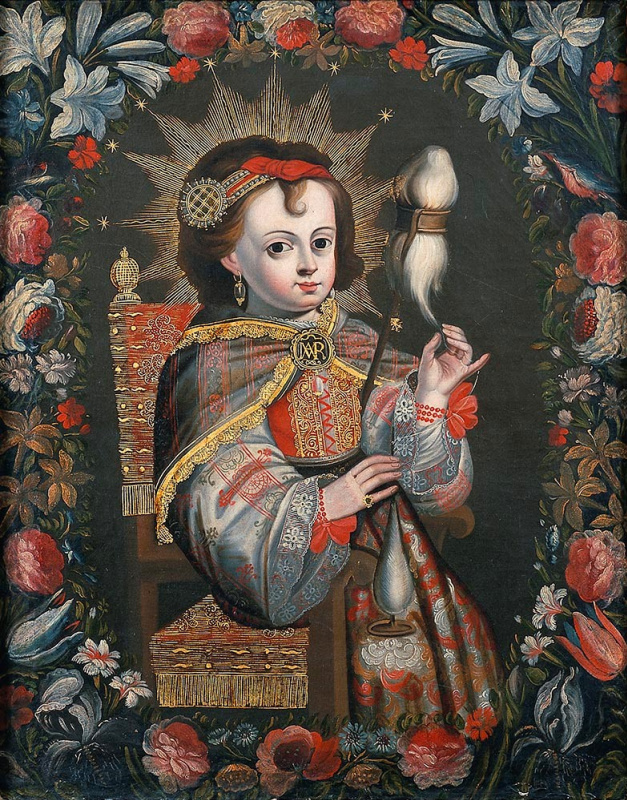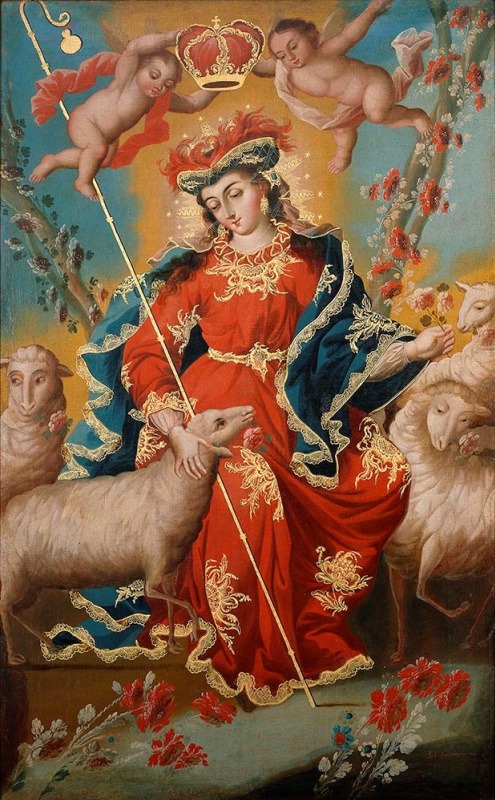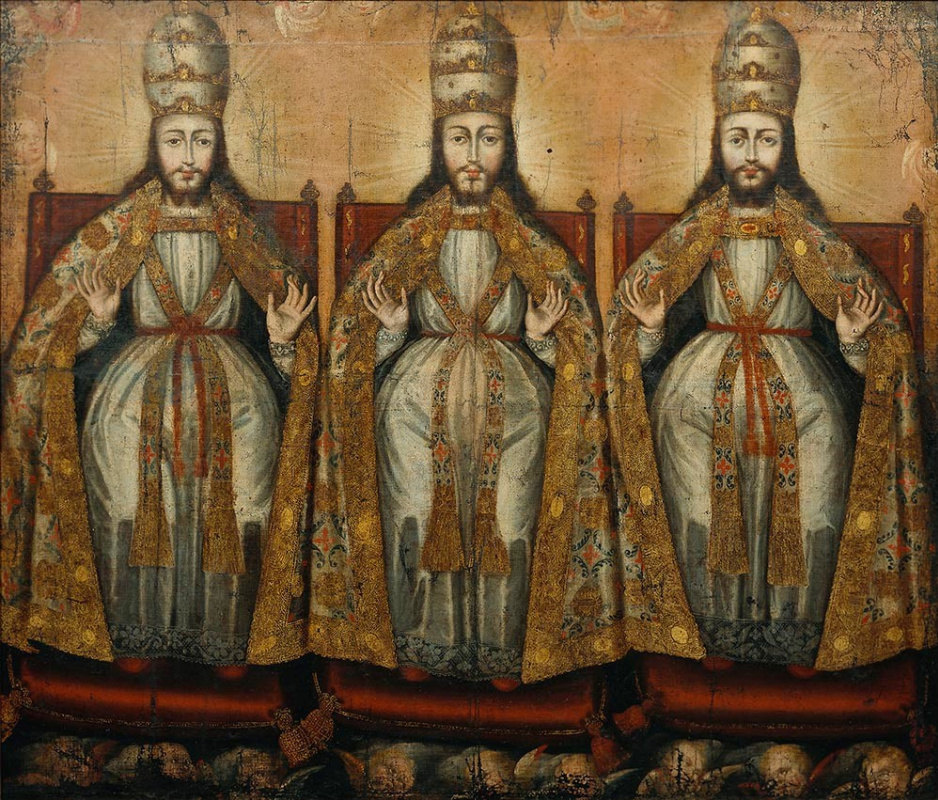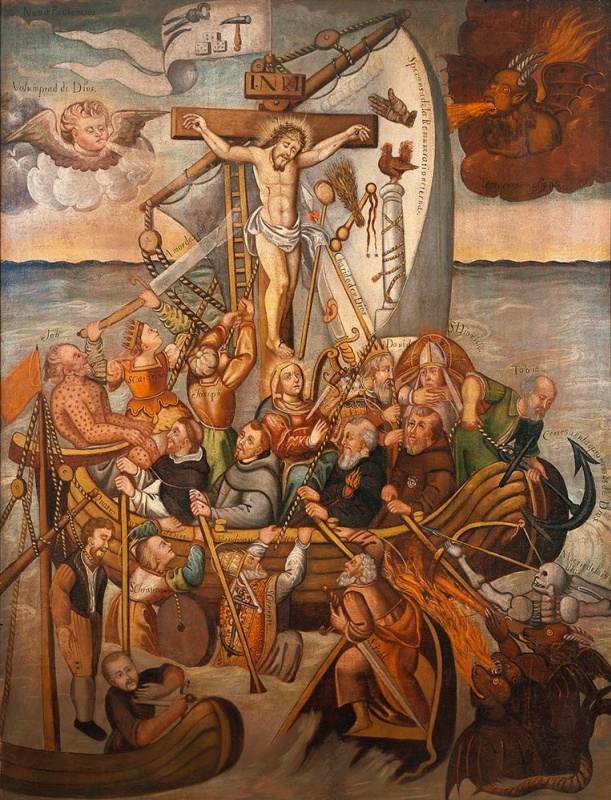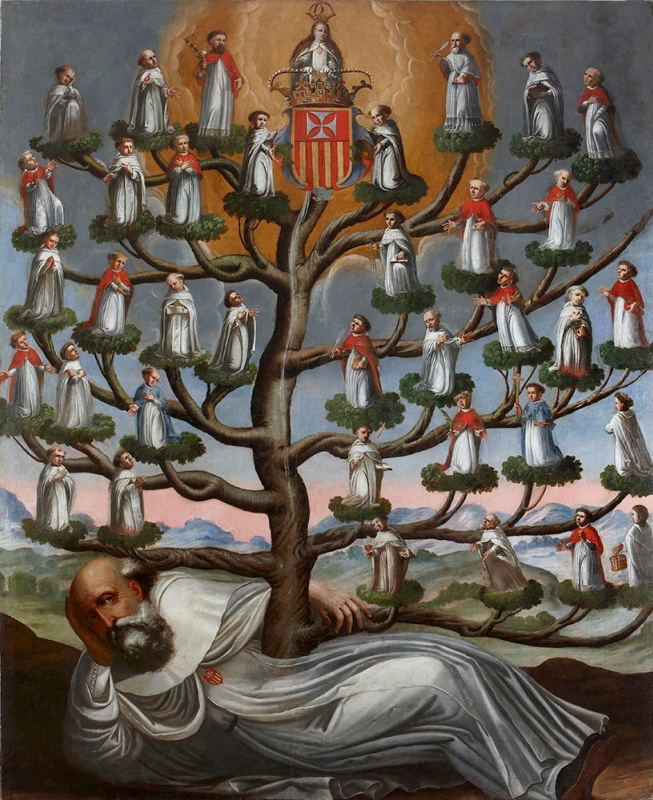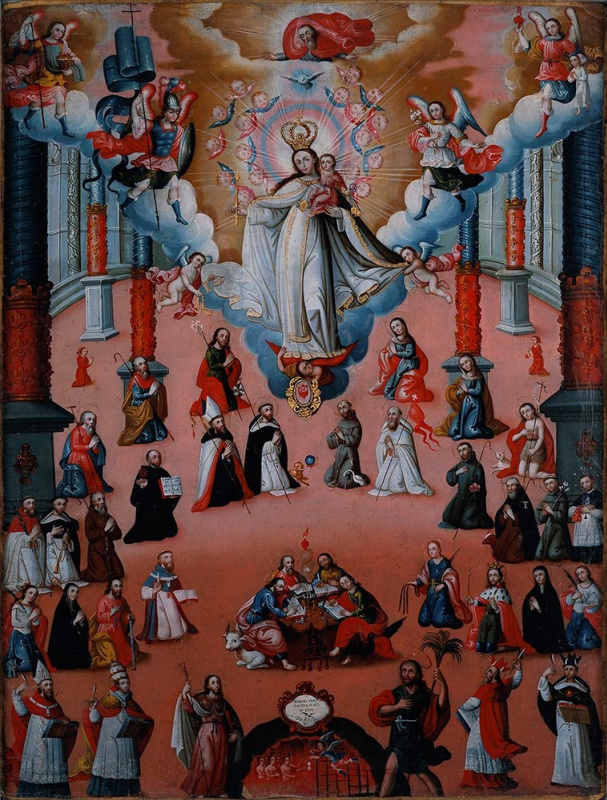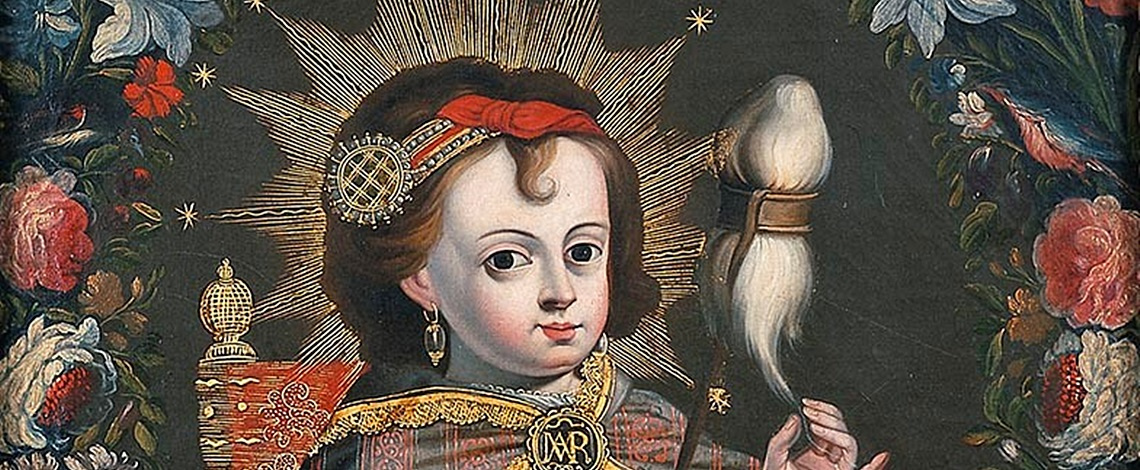log in
Enter site
Login to use Arthive functionality to the maximum
Spanish colonial painting from the Tom collection
Exhibition September 26, 2018 − August 18, 2019
The Spanish colonization of Latin America began with the appointment in 1535 of the viceroy of New Spain, which included modern Mexico, Central America and parts of the southern states of the United States. The vice kingdom of Peru, consisting of modern South America, with the exception of Brazil and the far south, followed in 1542. Later, Peru will be divided into the formation of the viceroy of New Granada and Rio de la Plata.
In the 16th century, European artists traveled to Latin America to meet the huge demand for artistic works in newly created religious institutions. Sometimes family workshops were founded, which lasted for generations. By the 17th century, artists born in Latin America began to dominate, and new styles and idioms appeared that were less and less associated with European origin. The 18th century was marked by the full flowering of Spanish colonial art, as regional schools and academies developed, and influential patrons demanded both religious and secular paintings of the highest quality.
Onexhibition paintings by Bernardo Rodriguez, Cipriano Toledo, Joseph Jimenez and several unknown authors are presented.
In the 16th century, European artists traveled to Latin America to meet the huge demand for artistic works in newly created religious institutions. Sometimes family workshops were founded, which lasted for generations. By the 17th century, artists born in Latin America began to dominate, and new styles and idioms appeared that were less and less associated with European origin. The 18th century was marked by the full flowering of Spanish colonial art, as regional schools and academies developed, and influential patrons demanded both religious and secular paintings of the highest quality.
Onexhibition paintings by Bernardo Rodriguez, Cipriano Toledo, Joseph Jimenez and several unknown authors are presented.
